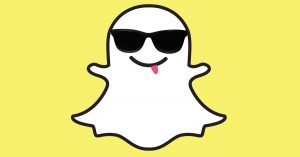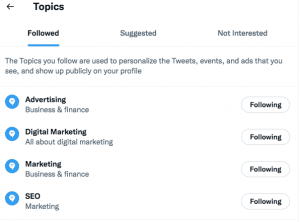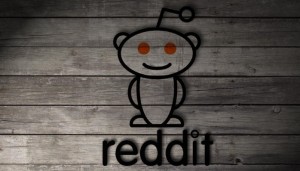Explore strategic vs. haphazard approaches in B2B social media and how the best-in-class companies are finding their “sweet spot.”
Never has the expression, “Don’t confuse activity for performance,” rang truer than in B2B social media programs.
You can divide organizations into two buckets based on their approach to social media execution:
- Those that think strategically and plan their programs.
- The ones who just post… anything and everything.
In a nutshell, that was our finding from a best-in-class research project evaluating the social media programs of close to 50 companies spanning multiple industries.
Unlike the B2C world, which successfully uses multiple social media platforms to engage with consumers and drive revenue, B2Bs have struggled to find the “killer app” for its social programs. More bluntly, how do businesses use these social media channels to impact their business performance?
B2B social media ‘sweet spots’
Our research has uncovered a handful of businesses beginning to find the “sweet spot” for B2B. They have evolved their social media posts from simple updates and events to more sophisticated and produced content intended to engage audiences and drive business goals.
In parallel, they have invested heavily in agencies and in-house resources dedicated to various roles related to their social platforms. Because of these investments, best-in-class (BIC) companies have progressed their program planning from weekly to quarterly.
But that is the exception, not the rule. We also observed plenty of organizations still stuck in week-to-week planning of essentially “what do we have that we can post?”
B2B content focus areas
When it comes to content, we found that BIC organizations are focusing the majority of their efforts into four essential “buckets” aimed at various audiences, including:
- Product/solution. Featuring products through HD images, video and content on successful implementation, customer testimonials, etc., aimed at buyers and prospects.
- Recruiting/HR. Information and imagery on culture, careers, training, diversity, etc., aimed at recruits and existing employees.
- Brand. Content and branding focused on communicating or enhancing brand pillars, for example; innovation, inclusion, efficiency, reliability, etc.
- Community. Posts focused on topics close to their hearts, such as Earth Day, Bring Your Child to Work Day, MLK Day, volunteer work, etc.
AWS (Amazon Web Services) has become a content juggernaut by producing daily podcasts through LinkedIn, Streaming to their 8.5 million followers, and then redistributing through other platforms.
The production quality of content has increased dramatically. Most BIC companies, like SAP, use short, highly produced and stylized videos to reach their followers.
Key social media platforms for B2B
In terms of channels, not surprisingly, the 800-pound gorilla for B2B companies is LinkedIn. Twitter (now X) has lost much of its business audience and interest from B2B companies. Instagram (IG) is now one of the four essential platforms for B2B (YouTube, LinkedIn and Facebook, to a lesser extent).
For example, IG has become a significant channel for McKinsey in distributing thought leadership. Their posts offer high educational value and most often link to studies and research.
Novartis, the pharmaceutical company, shares content in batches with a similar theme ( a charity, cancer research, culture, etc.) These “campaigns” usually have a consistent style, tone, and topic. At any given time, there may be 2-3 campaigns running on IG, tied together visually on the feed. This means they can create the content in a large batch and strategically schedule it out.
TikTok is growing its B2B audience, but it is very specific to industries/companies. Threads is still a question mark. It might be safer than X, but it’s having a difficult time building a B2B audience.
Abandoned pages and user behavior changes
A few other surprises also emerged through our research. “Legacy” platforms, like Facebook, where companies quickly rushed in years ago to set up pages and/or groups, have a vast graveyard of abandoned groups and pages. And that has left a door open for opportunists. We found fake pages using company branding and/or suspect posts using company pages.
We also observed behavioral changes by users, creating a challenge for brand consistency, particularly on LinkedIn. In the digital past, you had, on average, eight seconds to make an impression. Visitors would hit your site and quickly assess if they would explore or bounce. Now, with the scrolling features of social media, especially for Reels, that time is not down to seconds.
For example, during a social media research assignment for a client, we reviewed the LinkedIn post of a competitor. Our team found that consistent brand imagery (blue background with a cartoon image) for their posts created the impression that the viewer had already seen the post because of the similarity. So, if you want an audience to notice that your posts differ, use distinctively different imagery — and don’t tell the brand police!
Key takeaways and next steps
Along with our research, we created a social media maturity model built on the axis of content goals (marketing versus business) and production quality (a function of content, design and planning). We plotted the companies profiled and created a roadmap to elevate social media’s business impact. Below are our key takeaways:
- Visit and clean up what was built in the early days of social media and what might be lingering in the public domain (see my Facebook example).
- Start to think about creating a content schedule for a month and then two months in advance.
- Define the requirements to fill that calendar.
Based on BIC companies, you need to be posting:
- 1-2 times a day on LinkedIn (including weekends).
- 3-5 times a week on Instagram (daily on Stories).
- 1-4 posts a day if you would like to experiment on TikTok.
Map where the content will, or should, come from within your organization. You’ll need to go to HR, sales, product and corporate responsibility (they fill the four content buckets mentioned earlier).
Discuss their goals and how social media can help achieve and/or support them. Then, get their commitment and explain your process for capturing, reviewing, approving and posting their content.
Not everyone will invest in this journey. Some prioritize activity over performance, while others set higher expectations for prospects and customers.
Social media platforms in B2B are growing in importance, and companies need to mature their approaches to discover what works best for their business.
The post B2B social media ‘sweet spots’: What’s working and what’s not appeared first on MarTech.
MarTech(7)
Report Post







